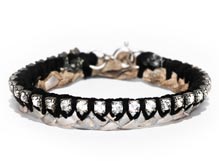Studio Visit: Erin Considine
The free-spirited jewelry designer and her meticulous approach to craft

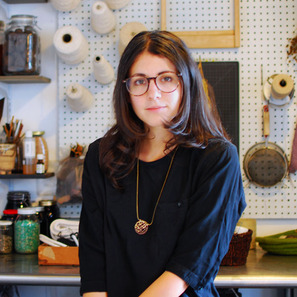
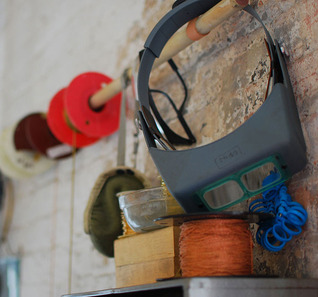
Jewelry designer Erin Considine embodies the patience that her handcrafted pieces reflect. From her Williamsburg studio the young Maryland native naturally dyes all of her own fibers before meticulously braiding or weaving them through various metal components, all soldered by her as well. Her wholesome approach is not only inspired aesthetically by the ’70s craft movement, but, she tells us, is also about reclaiming women’s work. Plus, her talent runs as deep as her design philosophy. We recently checked in with Considine to learn more about how she creates such distinctly stunning pieces.
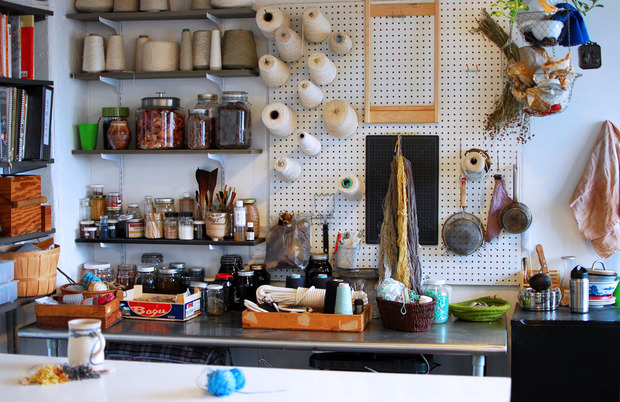
How did you become so skilled at jewelry-making?
Practice. I never was really good at art stuff in school. I wasn’t good at drawing cartoons when I was a little kid or anything. I was very hands-on with my experience. But in college I studied fibers. I went to Evergreen, a liberal arts college in Washington State. It’s the type of place where you design your own major, a great place to learn and explore. So I focused on jewelry mostly, it was kind of contemporary craft and sustainability. I was also studying architecture and alternative building systems, I dabbled in that a bit, but I really liked working with my hands and having a tangible product and result fairly quickly. I did a lot of casting, mostly lost wax casting.
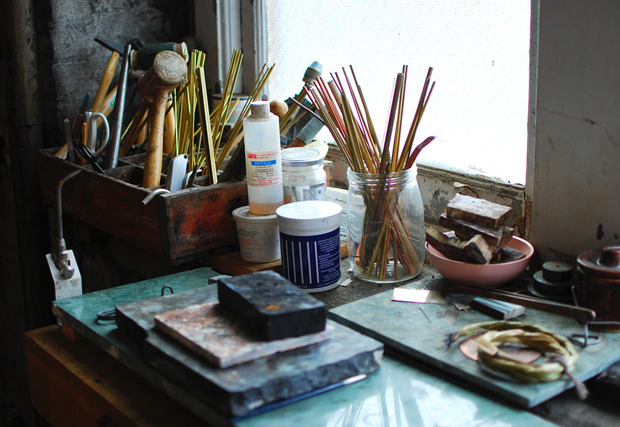
How do you start on a piece?
Usually I draw it out or I go to vintage deadstock jewelry warehouses and rifle through what they have and reimagine and redesign the pieces as I’m shopping. I don’t buy a lot of from there, typically it’s just chain or brass forms—because there’s a lot of junk, you know, there’s a lot of mystery metal. So I carry a magnet and make sure that everything’s brass or copper or something that I can manipulate. You could solder steel but it just gets really messy.
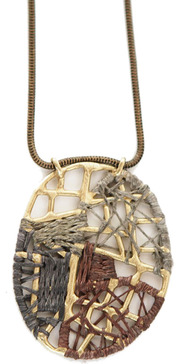
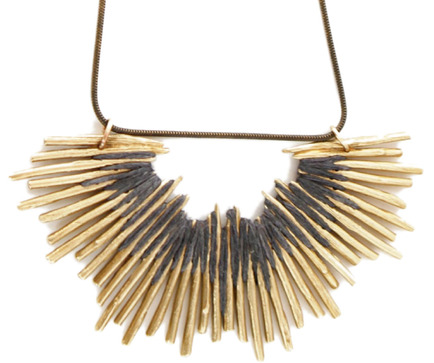
Which of the raw materials do you typically work with?
Mostly brass, and I’m getting into using some silver now for the spring collection. The fall collection is all based off of these drawings that I did. I was looking at a lot of Terry Winters‘ drawings and I was interested in creating a structure that I could weave around and create a texture. I made the brass piece, but also, all of our fibers are dyed in the studio and we use natural materials to dye fibers. Like this logwood, which is a hardwood from the Dominican Republic, I got it fair trade from a supplier. The gray, blue and purple are achieved by different mordants, so it’s not chemical but it’s like a mineral reaction with the dye.
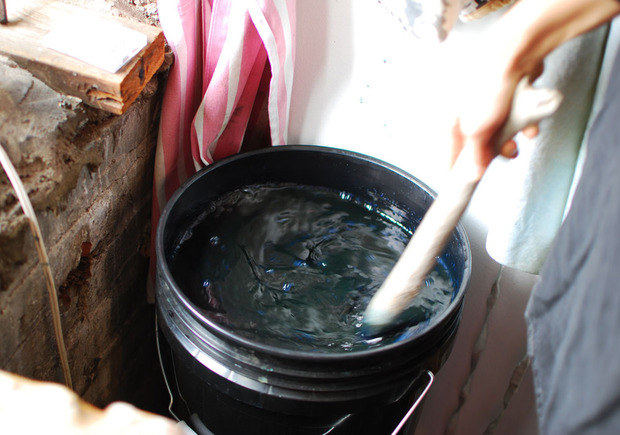
How did you learn how to dye?
I’m pretty much self taught. I started incorporating fibers into my jewelry about five years ago and I was just crocheting, making pieces for my friend’s store. I had always done fiber arts on my own at home, making scarves and hats and I was crocheting and knitting, but this line is an extension of my bringing those things together, those two aspects of my life. But I’m getting more into fibers, I’m trying to explore natural dyeing in more of a professional and scientific way because there’s a lot of old wives tales about dyeing and there are a lot of people out there that are studying how people used natural dyes hundreds of years ago. Up until the 1880s we were using natural dyes, and the dyes are still vibrant and exist today.
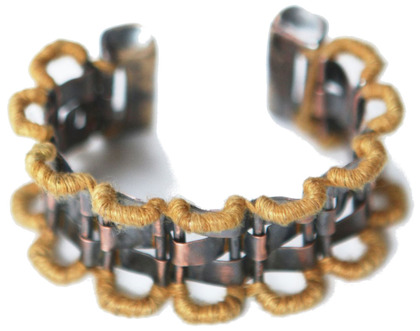

Is it about longevity or sustainability for you?
It’s a combination of both of those things. I like the sustainable aspect and the alchemical process in the studio. We’re fermenting a vat of woad right now that’s similar to indigo. It’s been sitting there for a few weeks and we have to stir it and feed it everyday. We add wheat bran, it’s kind of like making bread, you have a starter dough and add to it.

How do you choose your colors?
A lot of them are dictated by the dyestuff, so at the moment I’m sticking to logwood, fustic, madder root and woad, and some indigo. Whatever I’m focused on learning about is kind of what happens. I generally stick to those dye materials because they have the greatest life vastness and will last the longest. There are a lot of natural dyes out there that just fade. I mean, they will all fade—synthetic dyes fade, it’s a reality. If you wear it in the sun or sweat on it, it’s going to react with your skin. But with these dye materials, they’re much more stable, they don’t fade as quickly. But I like that aspect too of natural dyes. For instance, pokeberry is a little berry you see growing between sidewalks, birds really like them. You can use it as a pink dye, but it fades really really quickly.
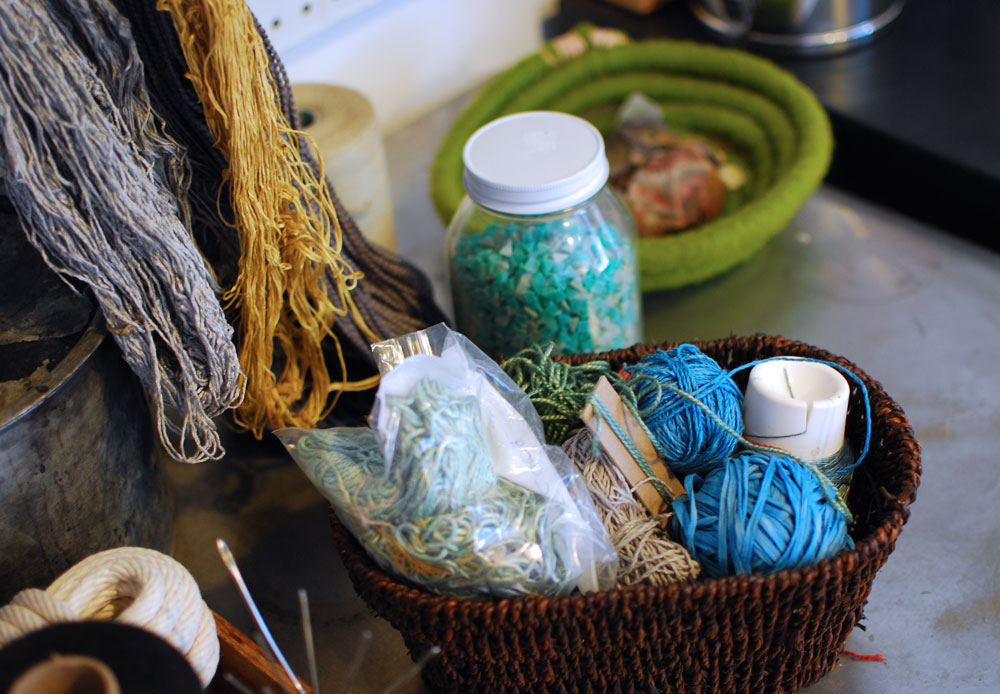
Do you ever collaborate with people?
I’m kind of working on that realm right now, Lauren Manoogian and I are going to do some scarves for next year. I’d like to get more into dyeing, I’ve been dyeing vintage pieces for my friend’s store. She has this online store called Where I Was From and sometimes they get things that are really cool but they have coffee stains they can’t get out, so we just over-dye the whole thing.
We did some pieces with woad, which is European Indigo basically, but it’s a different plant. It’s from the Brassicaceae family so it’s related to broccoli and cabbage and brussels sprouts. The plant was mainly used in France and England to dye fabric with—classic French blue is from woad. It’s really balanced, it’s not as purple as indigo or violet can sometimes look. This is this dyestuff over dyed with rustic, it’s a yellow so it makes this awesome green color—so this is kind of the palette for spring.
Do you have a trademark style?
I don’t know if you could sum it up into one thing, but yeah. I feel like my hand is definitely evident. I hope.
Images by Karen Day


